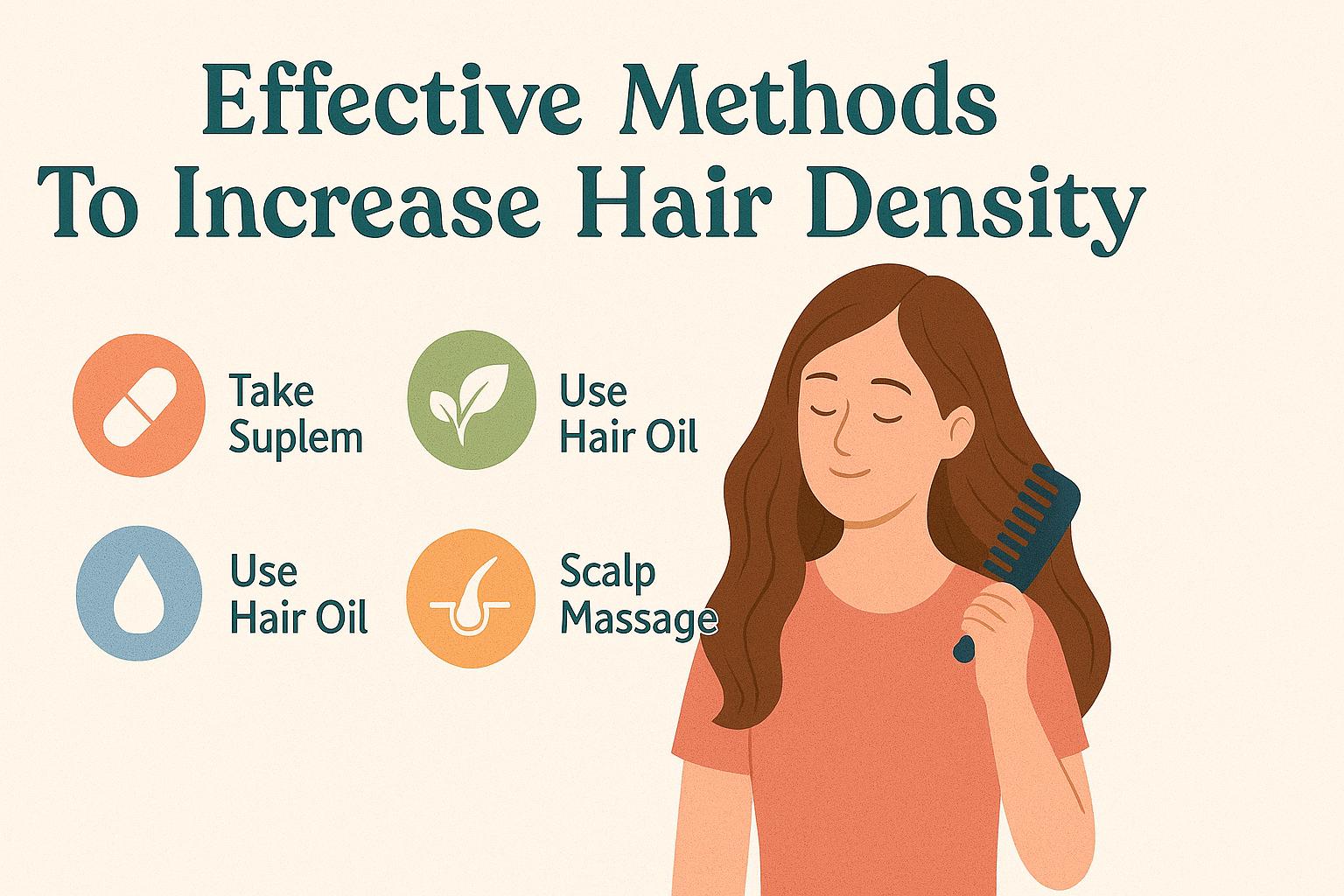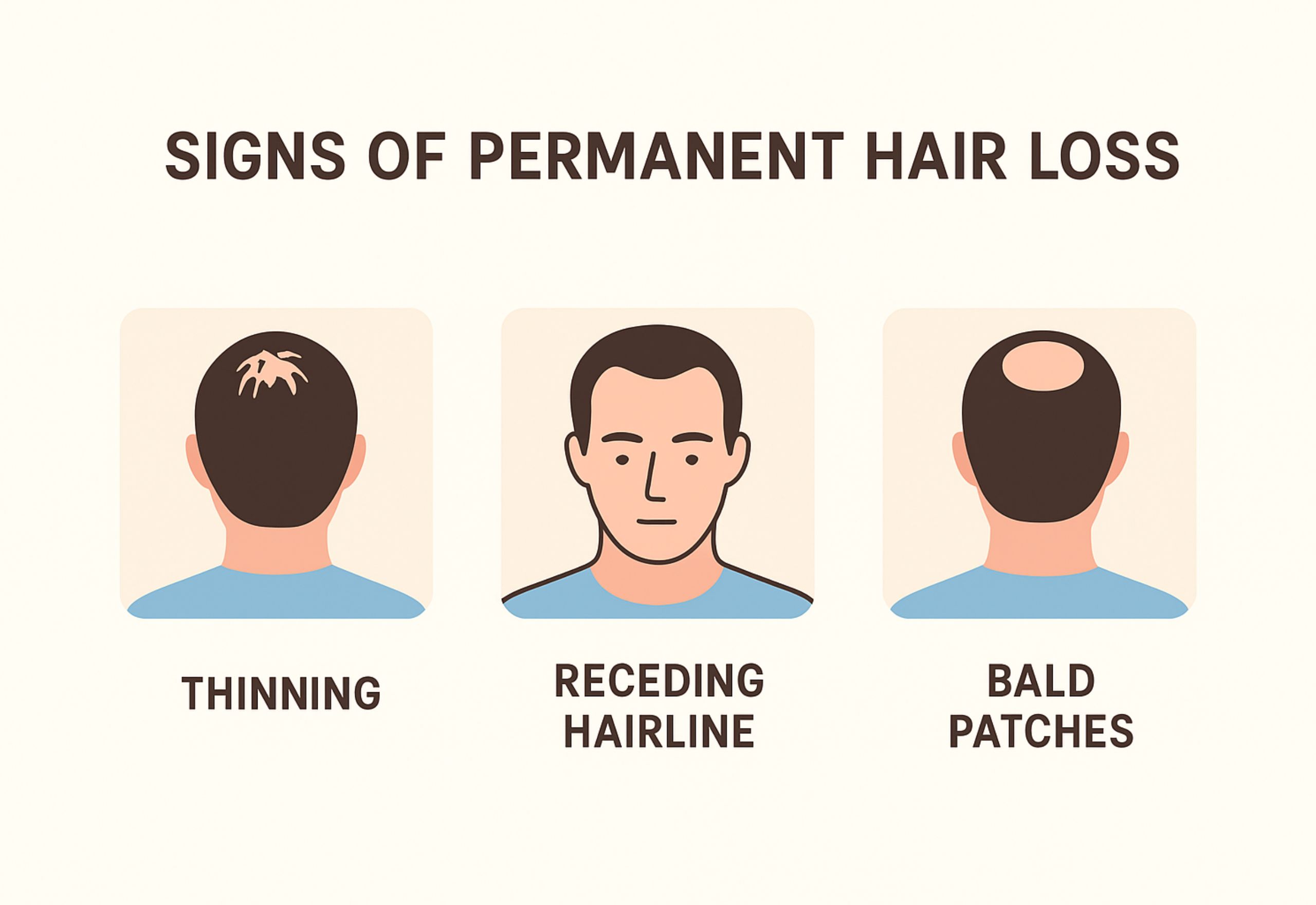Hair density refers to the number of strands growing from your scalp within a defined area. Most people are born with a fixed density based on genetics. But environmental factors, nutrition, grooming habits, and scalp health can influence how much of that density is retained over time.
If hair starts thinning or volume reduces, it usually means the follicles are under stress or the strands are breaking before they reach their full length. The goal is to support the scalp and the hair at every stage from the root to the ends, and reduce anything that interferes with growth.
The following ten methods are based on basic hair science and daily best practices. They do not alter genetics, but they do help improve visible thickness and reduce unnecessary loss.
Maintain a Clean, Healthy Scalp
Hair grows from follicles embedded in the scalp. If the scalp is clogged with sebum, sweat, or product residue, it can reduce oxygen flow to the root. Over time, this creates an environment that discourages growth.
Use a gentle cleanser to remove buildup. Wash based on your scalp’s oil level, not just a fixed schedule. For people with oily scalps, washing every two days is ideal. For dry scalps, every three to four days may work better. The goal is to keep follicles unblocked.
Improve Blood Circulation at the Root
Hair follicles depend on blood supply for nutrients. If blood flow is poor, the root receives less oxygen, iron, and protein. This slows growth and weakens the strand from the base.
Simple fingertip massage can help. Apply light pressure in circular motions for five minutes daily. You can do this on a dry scalp or while oiling. It’s a non-invasive, no-cost way to support growth activity beneath the surface.
Also Read: 7 Reasons to Use Conditioner After Every Wash
Focus on Protein and Iron Through Food
Hair is made of keratin, a structural protein. Without enough dietary protein, the body diverts what little it has to vital organs. Hair is not a priority, so it suffers first.
Include foods like eggs, paneer, pulses, and nuts in regular meals. Iron helps carry oxygen to the roots. So leafy greens, jaggery, dates, or an iron supplement (if prescribed) can make a noticeable difference in strand strength and retention.
Reduce Mechanical Stress on Hair Follicles
Tight ponytails, frequent braiding, or rough combing pull at the scalp. This continuous tension can weaken follicles, causing gradual hair loss in that region. This is often seen around the temples and hairline.
Opt for looser hairstyles. Use soft bands, avoid pulling hair back when wet, and sleep with your hair open or in a loose braid. These small shifts help preserve density, particularly at stress-prone points.
Use Oils That Support the Scalp, Not Just the Strand
Oiling is a common tradition, but not all oils suit all scalps. Heavy oils can trap heat or clog pores. Look for light oils that absorb quickly and contain ingredients known to improve circulation or reduce inflammation.
Examples include rosemary oil (which stimulates follicles), black seed oil (which reduces scalp irritation), and almond oil (which softens without buildup). Apply a small amount to the scalp, massage gently, and wash off within four to six hours.
Switch to Low-Tension Combing Tools
A wide-tooth comb is gentler than a brush or fine-tooth comb. It helps avoid breakage, especially when detangling after a wash. Always start from the ends, then move upward in sections.
Hair loss through breakage is still loss. If your strands snap midway due to rough handling, it reduces volume just as much as root-based thinning does. Tools matter, and gentle handling protects existing density.
Avoid Frequent Heat Styling
Excessive use of straighteners, curling rods, or high-heat dryers dries out the strand and weakens its structure. Over time, the cuticle, the protective outer layer, cracks, making hair brittle.
Let your hair air dry when possible. If you must use heat, apply a protective spray first and keep the temperature at the lowest setting. Reducing heat by even 50 percent can reduce strand loss from breakage.
Introduce Weekly Scalp Rinses to Detox
Rinsing the scalp with green tea, aloe vera water, or diluted apple cider vinegar once a week can reduce inflammation and help maintain the pH of the scalp.
This is not a replacement for shampoo. Instead, it helps clear away mild buildup and soothe the scalp after styling or sweating. It creates a better base for follicles to function without irritation.
Also Read: 7 Reasons Why Hair Mask Must
Monitor Sleep and Stress Closely
Cortisol, the hormone linked to stress, is also linked to hair thinning. Poor sleep, anxiety, and overwork affect hormone balance. This impacts hair follicles during their growth cycle.
Even basic changes help. Set a bedtime. Keep screens away an hour before sleep. Breathe slower when lying down. Stress cannot be eliminated, but it can be managed, and your hair benefits when you do.
Keep a Simple, Repeatable Routine
Hair care needs consistency. Random products or switching routines too often confuses the scalp. Instead, find what works and stick to it for at least three to four months.
Take pictures once a month. Look at your hairline, your parting, and your ponytail thickness. Track slow progress. Hair density improves quietly when the scalp is stable and strands are not being lost unnecessarily.
Final Thoughts
Hair density is partly natural, but it is also influenced by how you treat your scalp and your strands. By supporting the roots, feeding the body well, avoiding strain, and handling the hair gently, you reduce loss and give your follicles space to grow.
It takes patience. There is no shortcut. But the results are real if the care is steady.



